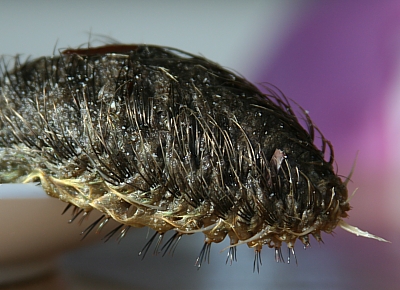Friday, September 10, 2010
September 10, 2010 : Sea Mouse
Sea Mouse
The sea mouse, Aphrodita aculeata is a marine polychaete worm found in the North Atlantic, the North Sea, the Baltic Sea and the Mediterranean. The sea mouse normally lies buried head-first in the sand. It can live in muddy sea floors down to around 1000m.
Its body is covered in a dense mat of chaetae (hairs), from which the name "sea mouse" derives. Its scientific name is taken from Aphrodite, Greek goddess of love. This is because, when viewed ventrally, the sea mouse resembles a human female's genitalia. They may grow up to 20 cm and are active carnivores, chiefly eating other polychaetes, such as Nereis, which may be up to three times the length of the sea mouse.
The iridescent threads or setae that emerge from its scaled back are one of its unique features. Normally, these setae have a red sheen, warning off predators, but when the light shines on them perpendicularly, they flush green and blue. The setae are made of millions of submicroscopic crystals that reflect and filter the faint light of the ocean depths.
Subscribe to:
Post Comments (Atom)


No comments:
Post a Comment